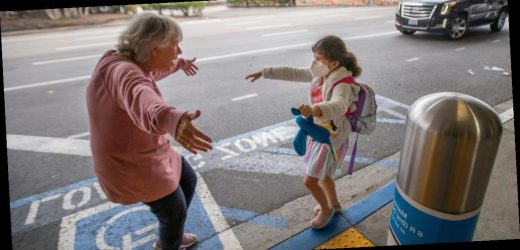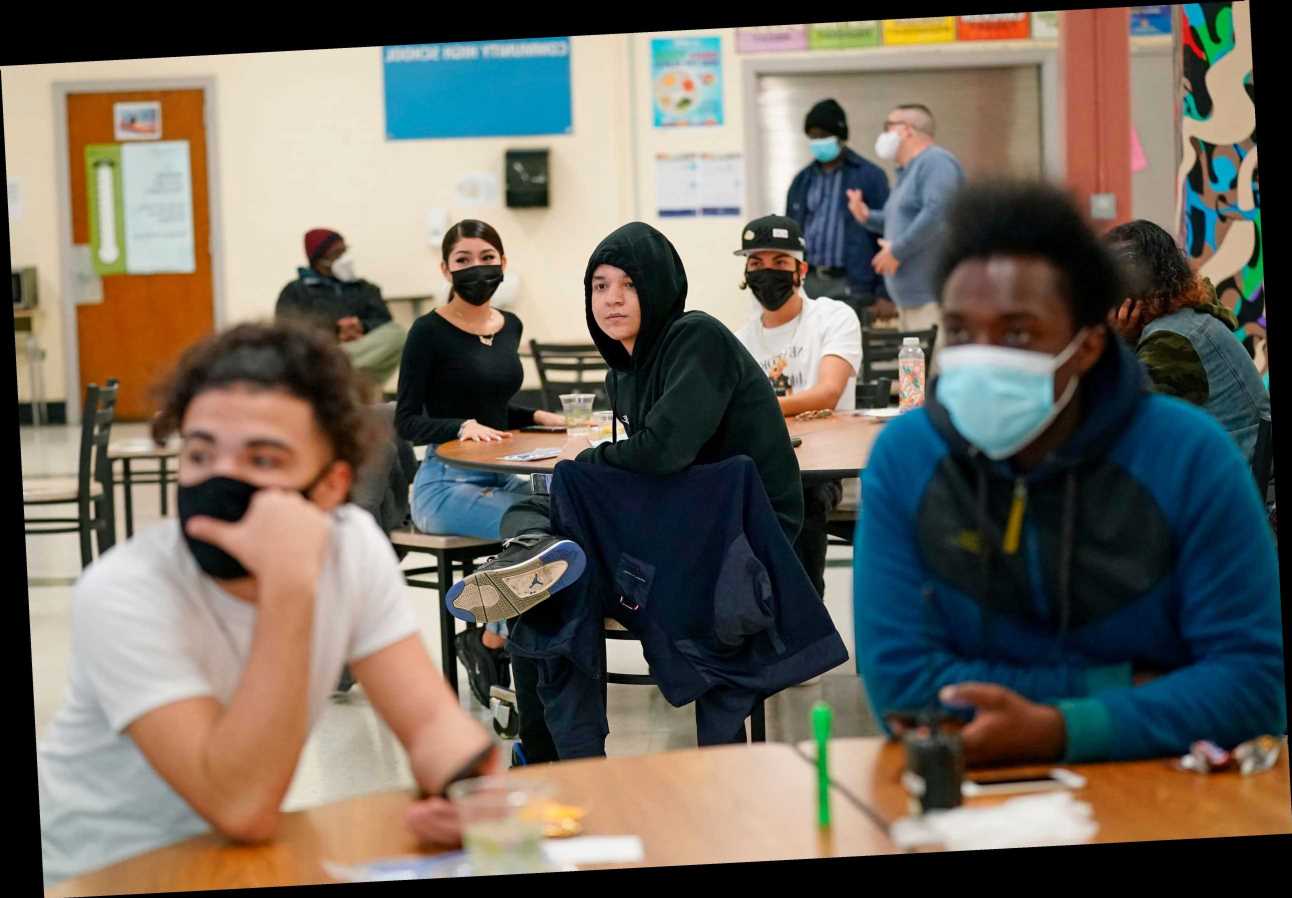- As pandemic fatigue sets in, many Americans have stopped following CDC rules as closely.
- Experts shared tips for how to hug, see friends, and take trips while keeping your risk of infection low.
- Visit the Business section of Insider for more stories.
Emily Gurley, an epidemiologist at the Johns Hopkins Bloomberg School of Public Health, drove from Maryland to Illinois this week to visit her in-laws. She’s not vaccinated yet, but she decided the road trip was relatively low-risk — even though the Centers for Disease Control and Prevention advises against all domestic travel.
“The black-and-white thinking gets us to bad places, honestly,” Gurley told Insider. “If you’re willing to always apply common sense and the principles of transmission, you can frequently figure out ways to do things safely, even if they’re not being promoted as a safe activity generally.”
It’s a message many Americans want to hear — and are already living day-to-day — after a year spent in relative isolation. Many people have returned to familiar practices like hugging relatives, vacationing with friends, or even hosting weddings. But the CDC still recommends that Americans avoid indoor activities, keep their distance, and wear masks anytime they’re around others.
“Now is not the time to relax the critical safeguards that we know can stop the spread of COVID-19 in our communities,” Dr. Rochelle Walensky, the CDC director, said at a White House briefing earlier this week.
“Please hear me clearly,” she added. “At this level of cases, with variants spreading, we stand to completely lose the hard-earned ground we have gained.”
Still, it’s unrealistic to think that everyone will follow the CDC guidelines to a tee. It’s somewhat akin to abstinence-only education: By simply telling people not to be sexually active, the strategy doesn’t highlight known ways to prevent pregnancies or STDs.
At this point in the pandemic, people need tools to help them preserve their sanity without majorly driving up coronavirus transmission.
So Gurley and Dr. Cindy Prins, an epidemiologist at University of Florida, outlined a few ways to keep your infection risk low even if you choose to bend the rules. In general, they suggest wearing a mask first and foremost, and only removing it when outdoors and six feet from others.
Opt for a road trip instead of a cross-country flight
Experts generally agree that the safest way to travel is in a car alone or with other members of your household. Trips to campgrounds or national parks are ideal, they said, since it’s easy to social distance there. Outdoor air also means a lower chance of transmission.
“The other thing you could do is rent a home somewhere nice, where you’re just enjoying being in this other area with a view,” Prins said.
If you decide to hop on a plane, experts suggest keeping the trip short and avoiding multiple connecting flights.
Your destination matters, too: Try to pick somewhere with a low rate of transmission. Another good rule of thumb, both experts said, is to avoid dense cities and places where you’d dine out frequently.
Meet friends for a picnic instead of at a restaurant
A new CDC report found that restaurant dining — both indoor and outdoor — was associated with increases in daily COVID-19 cases and deaths across the US. Indeed, Gurley said, there’s “lots of anecdotal evidence” that transmission happens over meals.
If you’re going to meet a friend at a restaurant, she said, eat outdoors with someone who’s taking similar precautions to your own, and try to confirm that community transmission is low in the area where you’re dining.
The safest way to share a meal, though, is over an outdoor picnic or in a backyard, where you can ensure you’re six feet from others.
“Personally, that’s my strategy for getting together with people: outside, six feet apart. You can still carry on a conversation and everybody brings their own snacks,” Gurley said.
Prins said she also meets friends outdoors for lunch, “but we sit at opposite ends of the picnic table.”
Keep indoor gatherings small, and try to avoid eating or drinking
Across the board, outdoor interactions are safer than indoor ones. But since many Americans are choosing to gather indoors anyway, there are ways to do it more safely: Keep groups small, wear masks, and try to stay far apart.
“Ideally if you’re socializing, you’re having one person over, maybe two people,” Prins said. “You’re not having a party, because that’s a bad situation.”
Prins also suggested keeping eating and drinking to a minimum.
“It’s all a little strange, right? Because you expect to bring someone over, feed them, sit with them, and converse,” she said. “If you are going to eat something, maybe think about having more bite-sized snacks that someone can take their mask down, have a bite, and then put their mask back on.”
Choose socially distanced, outdoor workouts over indoor gyms
Both experts strongly advised against going to an indoor gym, but Gurley said outdoor fitness classes are a lower-risk alternative. That’s true even if people aren’t perfectly spaced six feet apart, she added.
Prins also suggested trying outdoor sports, especially those that don’t involve close contact — choose tennis over basketball, for example. A tennis match probably wouldn’t even require masks, she said, but masks should be worn during basketball game, which should also be kept short.
“I’m sticking with my outdoor exercise: walking and running or playing tennis,” Prins said. “I miss my fitness classes, but I haven’t felt comfortable going back to that yet.”
If you’re going to hug, wear a good mask
Experts understand that many of us are starved for hugs.
“I get it,” Gurley said. “I’m a hugger myself.”
If you have to hug someone, she said, make sure it’s outside and that you’re wearing your best mask. Don’t hug if either of you feel ill or have had recent exposure to COVID-19. It helps if cases are low in your community.
“Giving a quick hug and masks are on — for me, I just don’t see it as that big a deal,” Prins said. “Go in and grab your hug, then put the six feet back between you.”
Ask wedding guests to test and quarantine beforehand
The CDC classifies weddings as high-risk, since it’s difficult for guests to stay apart, and attendees often travel from out of town. But an outdoor wedding is safer than an indoor one, the experts said, and masks are critical.
Even if it’s not a perfect solution, Gurley said, it’s helpful to ask guests to quarantine roughly two weeks before they arrive and get tested. Prins suggested having each guest’s contact information handy in case someone tests positive for COVID-19.
“I would keep it to something more like cocktail and appetizer, rather than the big sit down, close-to-each-other kind of dinner,” she added.
Overall, the experts said, it’s best to choose the few activities that are most meaningful to you and enjoy them as safely as possible.
“I’ve always found it difficult to say, ‘Never do this,'” Gurley said. “There are usually safe way to do most things, but it just takes a lot more planning and commitment.”
Get the latest coronavirus business & economic impact analysis from Business Insider Intelligence on how COVID-19 is affecting industries.
Source: Read Full Article

